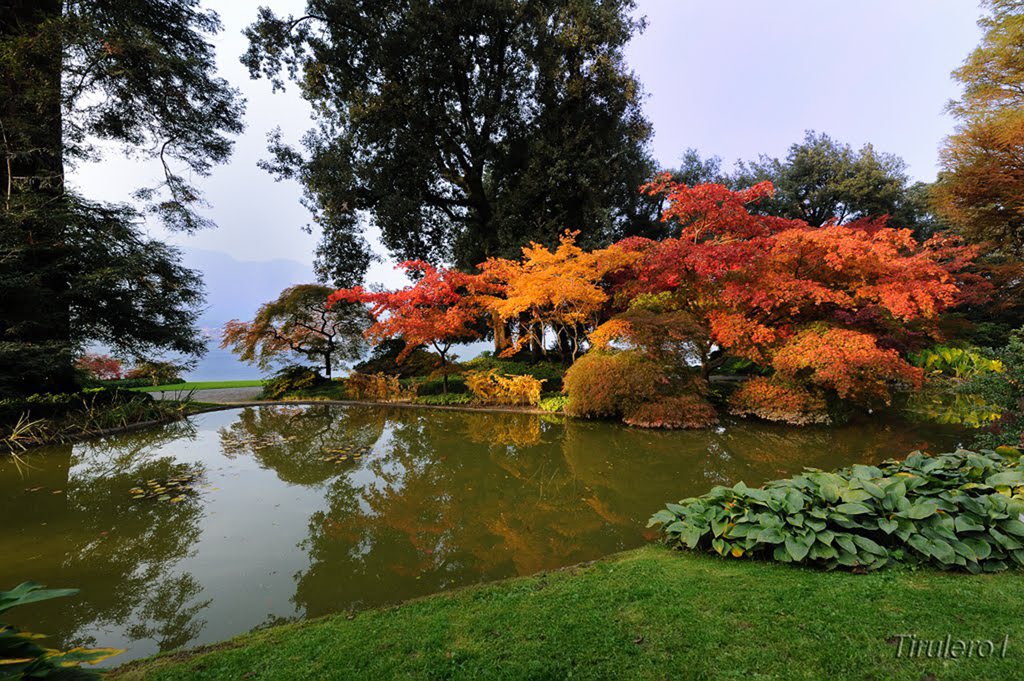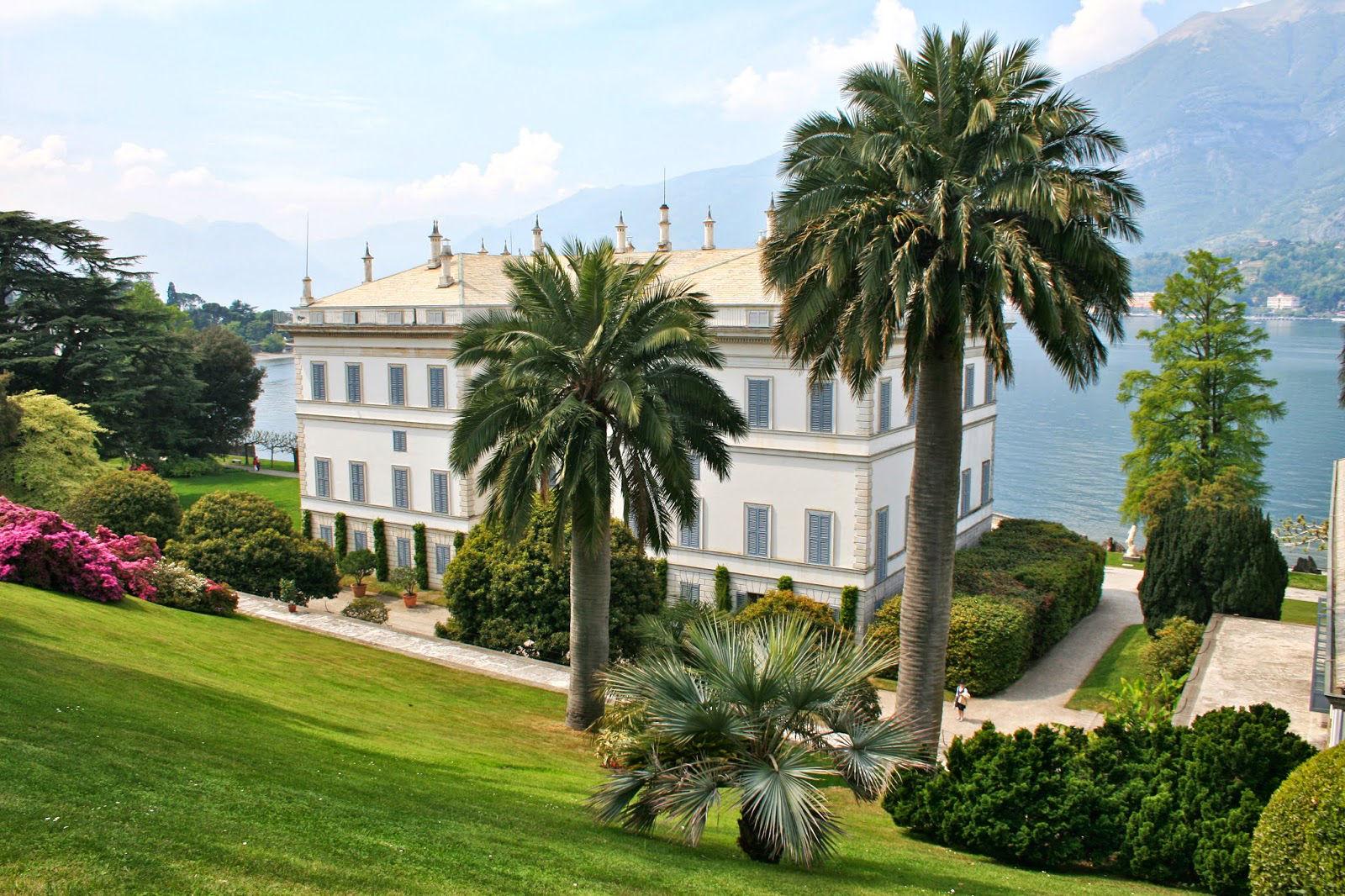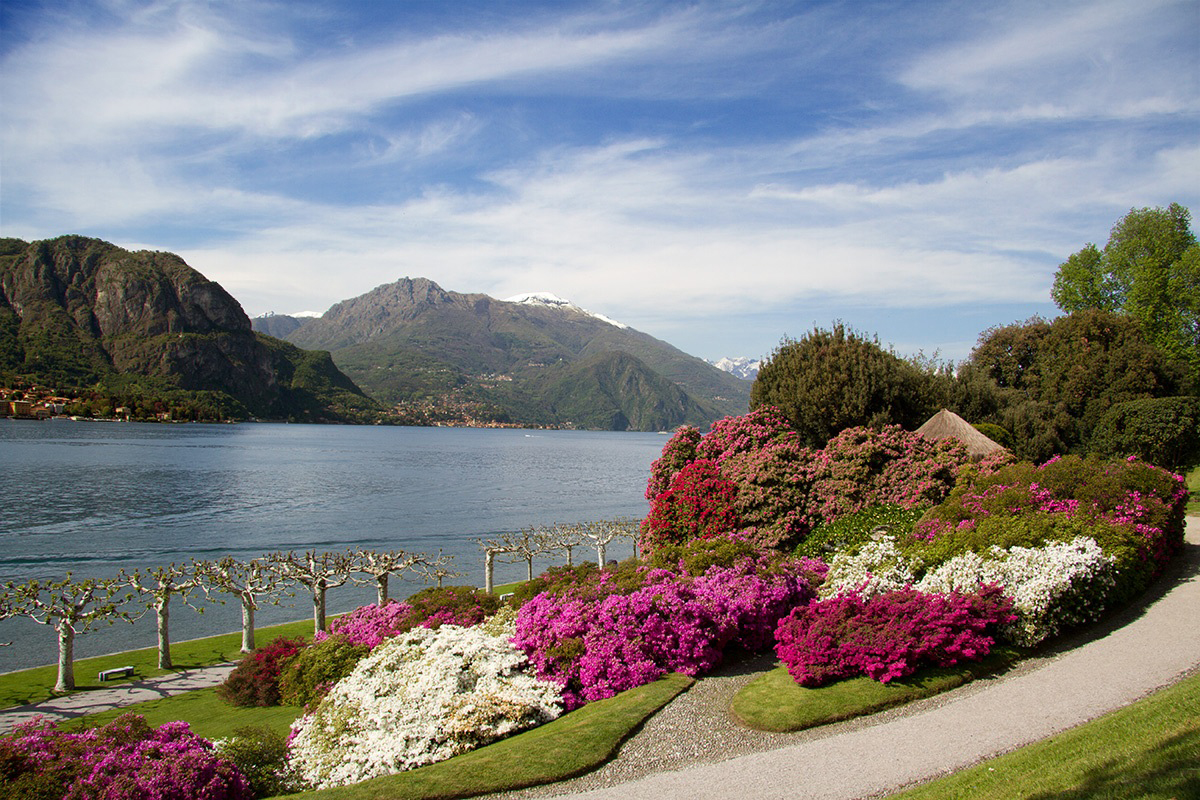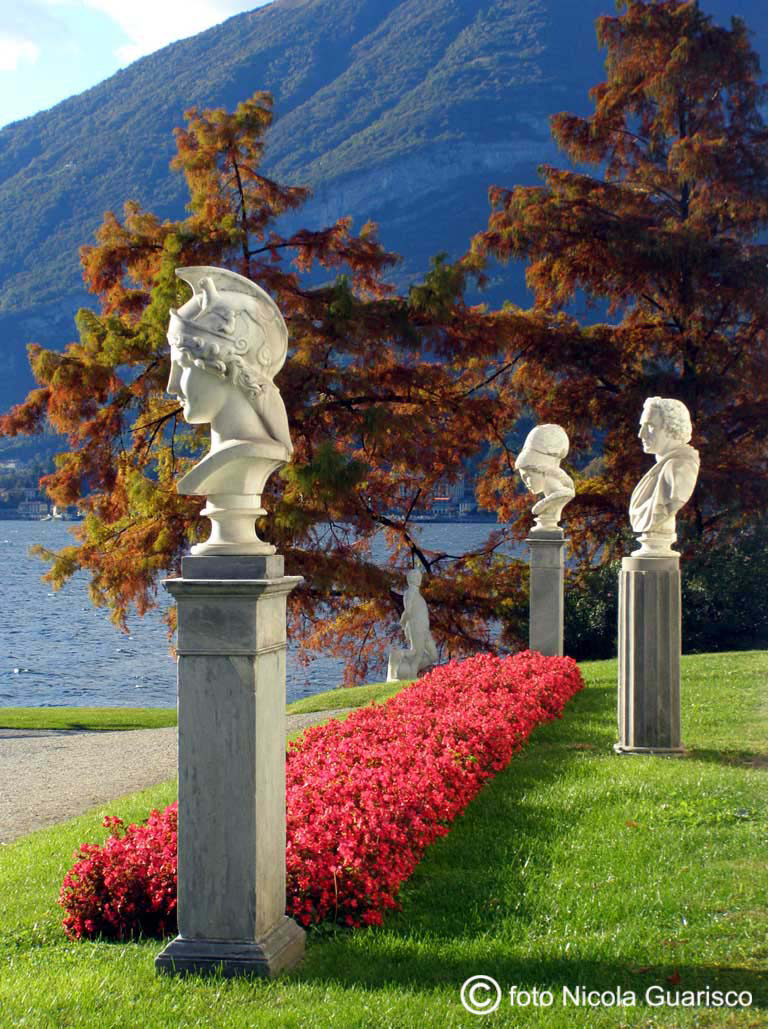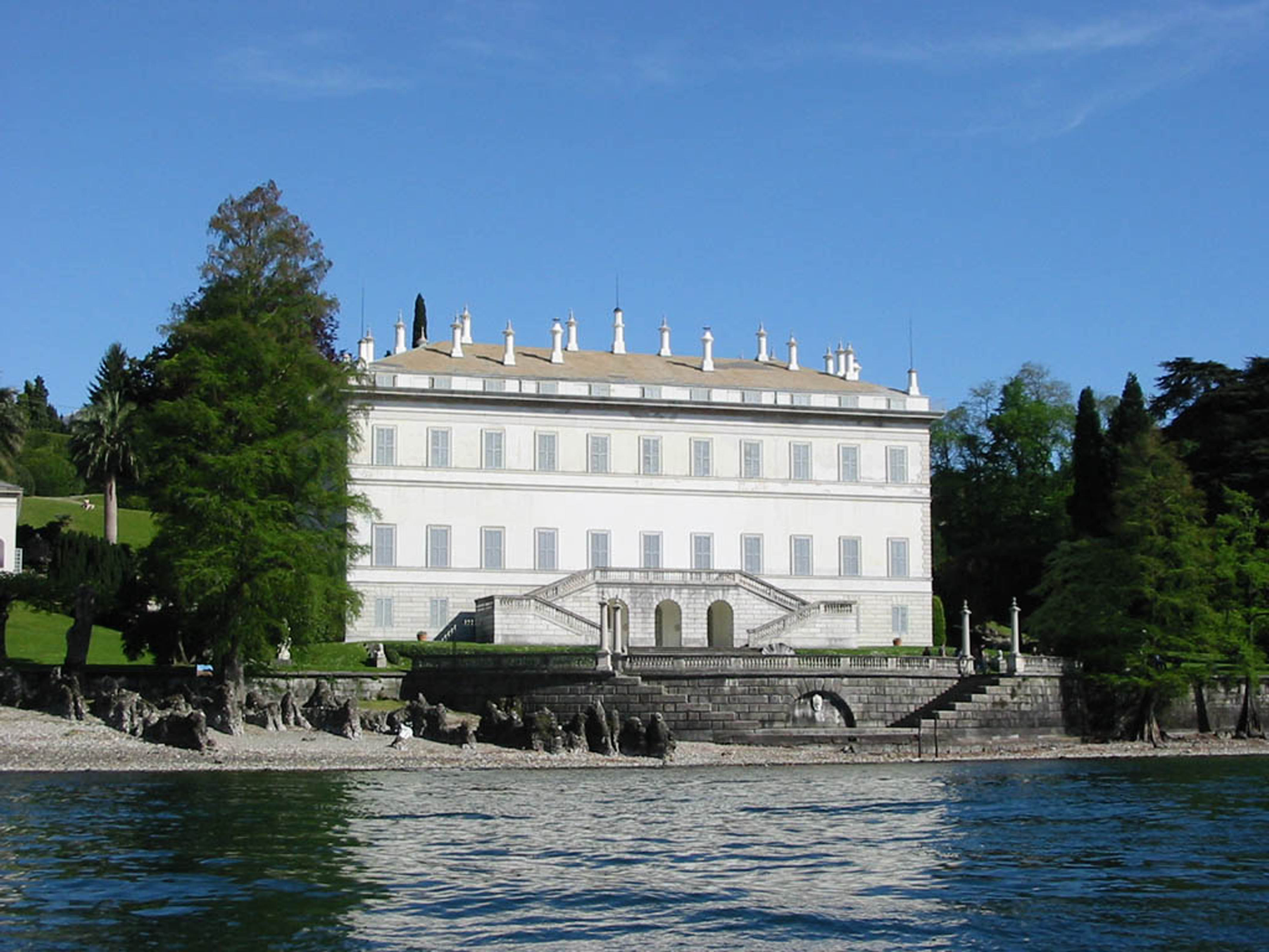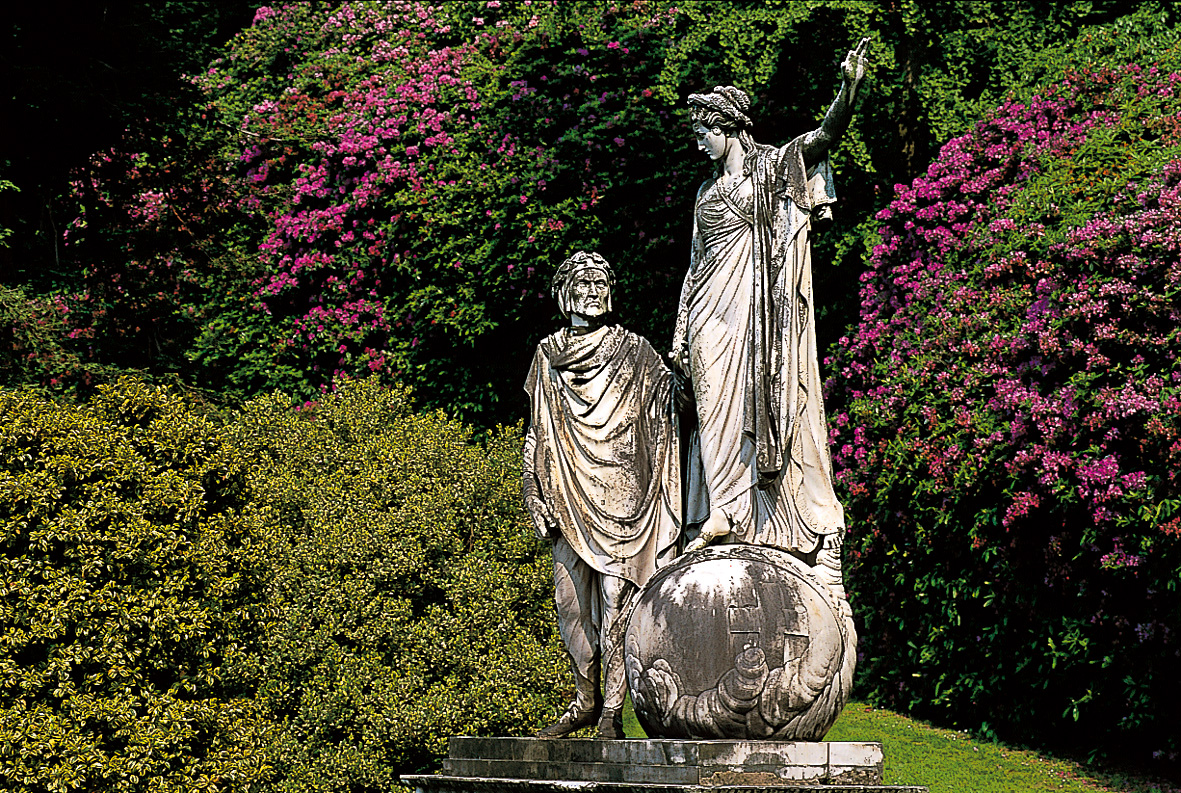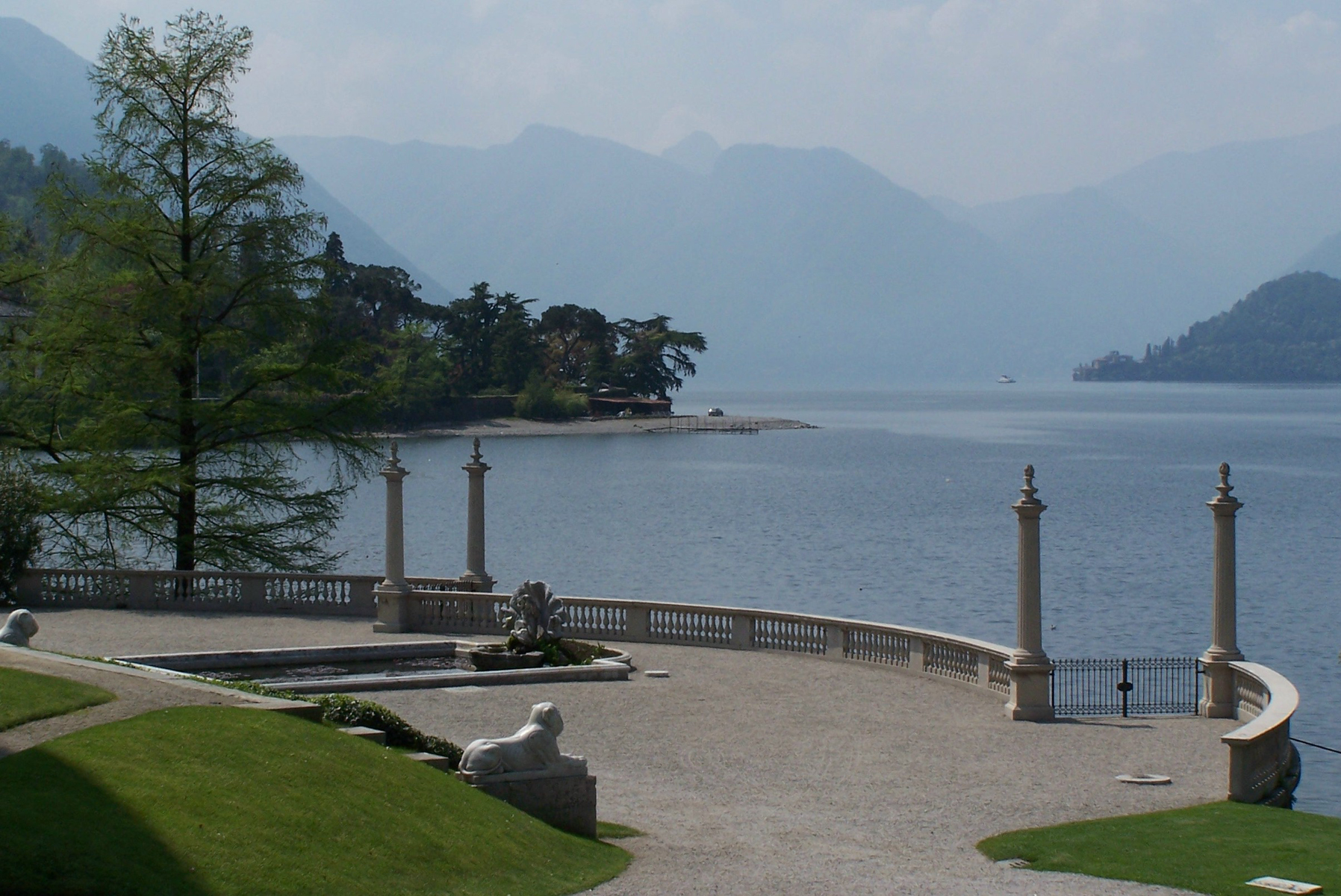
Villa Melzi d’Eril
This post is also available in:
 Italiano (Italian)
Italiano (Italian)
Villa Melzi is on the eastern shore of Lake Como; it was built between 1808 and 1810, in a sober and elegant neoclassical style, by architect Giocondo Albertolli. The villa was actually erected for the Duke of Lodi, Francesco Melzi d’Eril. At that time, he was the vice-president of the First Italian Republic and then a great chancellor of the Italian Kingdom – as well as a personal friend of Napoleon.
On the other hand, the park was designed by Luigi Canonica and the agronomist Luigi Villoresi (who also authored the park of the Royal Villa in Monza, in the first half of the XIX century).
Also the interiors were decorated and furnished by Giocondo Albertolli, and by the most important artists of the time, including painters Andrea Appiani (1754-1817), and Giuseppe Bossi (1777-1815), as well as sculptors Antonio Canova (1757-1822), and Giambattista Comolli (1775-1830).
At the end of the XIX century, the villa and the beautiful park were inherited by Duke Tommaso Gallarati-Scotti and subsequently by Count Lodovico.
This elegant estate, exceptionally blended within the lake landscape, was also celebrated by Stendhal in his “Rome, Naples, Florence”, published in 1817.
It’s also worth mentioning the family chapel with the altar carved by Giambattista Comolli, and the small museum with some Egyptian and Napoleonic finds.
THE PARK
The garden around the villa stretches along a soft slope that gently rises from the lake; it can be reached on winding paths among exotic plants, azaleas, and rhododendrons, as well as ancient trees, and marble busts.
On the lake, there’s a small kiosk now used as a coffee house, as well as a Moorish-style building with a sculpture by Giovanni Battista Comolli – depicting Dante and Beatrice – in front of it. This very sculpture allegedly inspired Franz Liszt (1811-1886) when he wrote the sonata dedicated to the great Italian poet.
On the lakeshore, there’s an avenue with umbrella-shaped plane trees (Platanus x hybrida – typical of France, where they were used to offer some shade to the marching troops of Napoleon), and bordered with rhododendron and azaleas.
Along the lake and next to a wonderful specimen of Montezuma pine (Pinus montezuma) there are several Egyptian statues, from Napoleon’s campaigns, including the one depicting the goddess Pakhet.
The avenue leads to a wide terrace in front of the villa, whose simple facade is adorned only by a double-ramped staircase with four Egyptian-styled lions at the base, sculpted by Giambattista Comolli.
On the terrace overlooking the lake, there is a boxwood parterre delimited by two columns, around a tub of water lilies decorated with sculptures from the second half of the XIX century.
On the sides, there are two XVI century statues by Guglielmo della Porta, depicting Apollo and Meleager.
Inside the Moorish-style building on the lake, there are the busts of the Emperor of Austria Ferinand I, Empress Marianna of Savoy, and Duke Lodovico Melzi with his wife Josephine Melzi Barbò, who used to have tea and listen to music right here.
Halfway up the slope, a grassy plain offers a great observation point on the lake: on a clear day, Villa Carlotta can be seen on the opposite shore.
The garden houses a rare example of XIX century greenhouses, exceptionally preserved and designed by Luigi Canonica and Luigi Villoresi. In the past, they were heated through hot air pipes connected to a boiler built on the lower terrace.
The Orangerie, the actual greenhouse where potted citrus plants were once kept during the winter, is now used as a small museum of Napoleonic memorabilia, archaeological finds, and two Renaissance frescoes.
On the southern side, next to the Loppia dock, there is the neoclassic family chapel, also designed by Giocondo Albertolli; inside it, there are precious rose stuccoes and frescoes by Angelo Monticelli (designed by Giuseppe Bossi). There is also a statue of Christ the Redeemer by Giambattista Comolli, and various funerary structures. On the external wall towards the garden, there’s the door of the Melzi house in Milan, attributed to Bramante.
THE PLANTS
The garden shows some typical English features, with large patches of rhododendrons and azaleas, several majestic exotic trees like Liriodendron tulipifera, Fagus sylvatica “Asplenifolia”, Fagus sylvatica “Atropurpurea”, Gingko biloba, English oaks (Quercus ruber), and Caucasian zelkowas (Zelkova carpinifolia). Evergreen species include cypresses (Cupressus sempervirens), pines (Pinus strobus, P. sylvestris), wondrous bald cypresses (Taxodium distichum), Japanaese cedars (Cryptomeria japonica), Sequoia sempervirens, Taxus baccata “Fastigiata”, Cedrus libani, Chamaecyparis obtusa “Compacta”, camphor (Cinnamomum camphora), a spectacular Pinus montezumae on the lake shore, a huge cork oak (Quercus suber), and some palms (Jubaea chinensis).
Less abundant species include sweet osmanthus (Osmanthus fragrans), mimosa (Acacia dealbata), a spectacular wedding cake tree from China (Cornus brachypoda “Variegata”), bamboo groves and potted citrus trees (Citrus deliciosa, C. Bigardia, Citrus x limon).
Near the Loppia entrance, along the south side of the garden, there is a thick bamboo grove, which matches the oriental garden located at the opposite entrance from Bellagio, both a testament to the XIX century taste for exotic details. The oriental garden was created in the second half of the XIX century and decorated with an evocative water lily pond surrounded by Japanese maples ( Acer palmatum ), wondrously blooming in autumn.
To the north of the pond, there is an artificial cave – dominated by a fake ruin created by the architect Canonica – and an exquisite stone bridge.
This post is also available in:
 Italiano (Italian)
Italiano (Italian)
Contatti
Lungolago Marconi - Bellagio(CO)
+393394573838
daniela@giardinidivillamelzi.it
http://www.giardinidivillamelzi.it
Altre info
6,5 euro, sconti comitive e scolaresche
da fine marzo a fine ottobre
aperto dalle 9.30 alle 18.30
